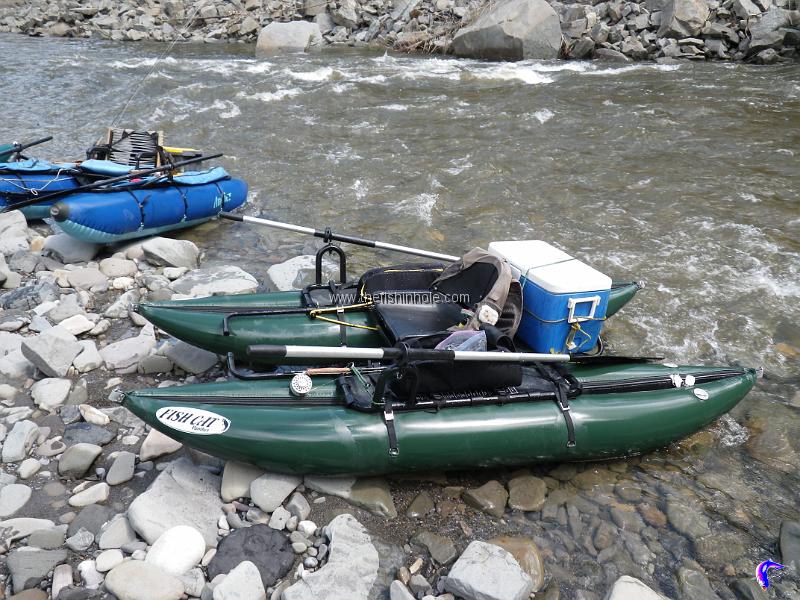It's every angler's desire to fish where others don't, to find solitude and virgin waters. For many, personal pontoon boats can make this dream a reality. A personal pontoon boat is a one-man water craft that uses inflatable parallel pontoons for flotation, with an attached frame and seat from which you propel and steer the boat. They are light and portable - one person can easily load them into the bed of a pick-up. Propulsion and directional control are provided by oars, fins or a combination of the two. Best of all, the minimal draught, superb stability, ease of manoeuvring and durability of pontoon boats allows fishermen to access river and lake waters not easily reached by more traditional boats or on foot. In short, they're your passage to virtually untouched waters.
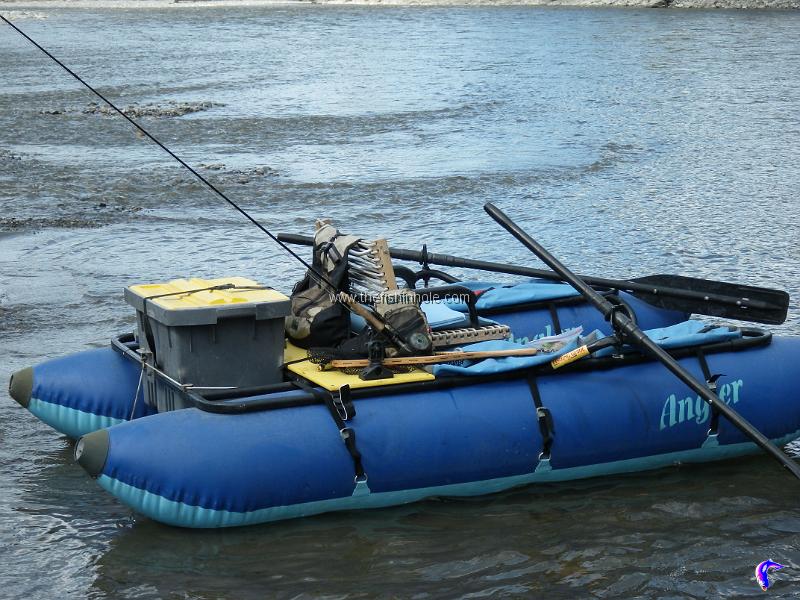

Rowing Your Pontoon Boat
Most pontoon boats come equipped with oars and oar locks, and these provide the primary means of mobility, especially when you plan to travel significant distances on the water.
Start on a lake to learn the basic strokes, not a river, as moving water adds a complicating element to manoeuvring and steering your boat. There are four basic rowing strokes to conquer - reverse, forward, offset and opposite oaring.
Reverse rowing is the basic stroke most of us are accustomed to. You extend the oars out and back, submerge them, then pull back, forcing the oar blades forward and the boat backwards. Forward rowing is just the opposite; you extend the oars out and forward, submerge the blades then push forward, propelling the boat forward. With offset rowing the oars work alternately, instead of in unison. This technique allows for a resting period for each of your arms and is well-suited for long distance travel. Opposite rowing, as the name suggests, sees your oars work in opposite directions to one another. With one you reverse row, with the other you forward row. This stroke is particularly critical in flowing water when you have to turn the boat quickly to avoid obstacles. Continual opposite rowing will soon have your pontoon boat spinning in place.
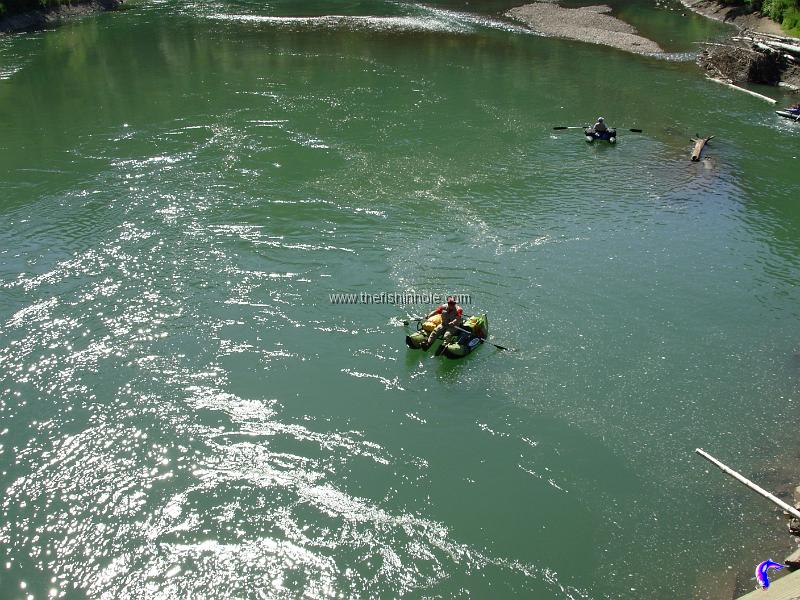

Fins
It's advisable to understand the basics of rowing with oars before learning to use fins, though the basics are similar. Kick forward to move the boat backwards, kick backwards to propel your boat forward. Alternate leg kicking in a single direction allows for resting, and opposite-direction kicks will spin your pontoon boat in place. The deeper you submerge your fins, the stronger the kick required and the farther and faster your boat will travel with each stroke. As with rowing, practice your fin work until such time as it becomes second nature, allowing you to focus on fishing. Note that you must be careful how you move your fin back to the starting point of the stroke - if you kick in both directions you won't get anywhere on the water, as you would probably imagine.
Travel on the Water
Once you've got the basics down, you'll find that travel on lakes and ponds is pretty easy, and most often you'll use reverse oaring or fining, moving your craft backwards much as you would with a standard rowboat. On rivers, however, you want to be continually facing downstream so that you can anticipate and avoid approaching obstacles. Fins should definitely not be used on fast flowing water or in areas where you may encounter rapids. Forward rowing and/or kicking in slow moving water will almost be continual. It's important, however, that you utilize reverse rowing when avoiding trouble or lining your boat up to navigate rapids. The first rule of thumb when pontoon boating is that whenever you need to quickly evade trouble, you simply point your boat directly at the source of the impediment and reverse row; no technique is quicker for getting yourself out of an impending jam.
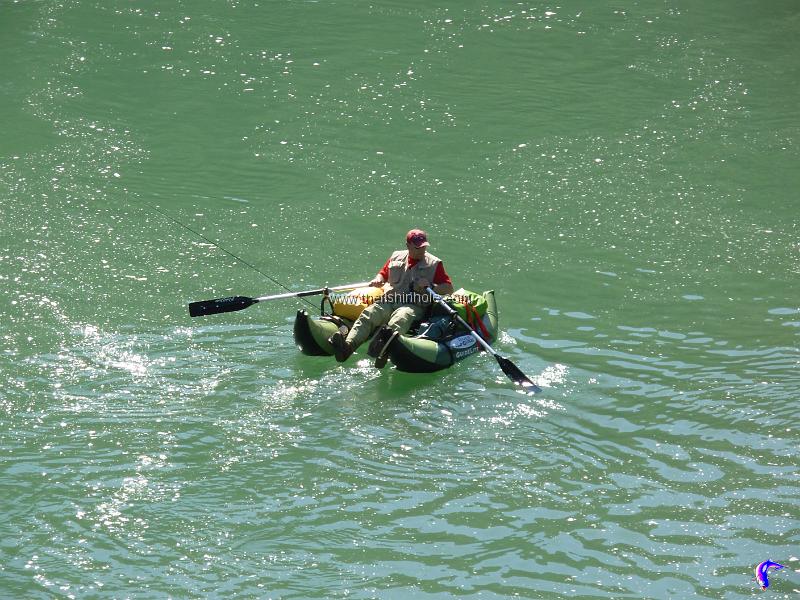



Fishing Techniques
On lakes and potholes, most often you'll want to row out to the general area you'll be fishing, then set your oars aside and fin through the best water, much like using your main outboard to reach a specific area on a lake before turning to an electric trolling motor to finesse your way around the key locations. You'll find that casting, whether a fly fishing rod or a spinning rod, is much easier on a pontoon boat than in a float tube as the height above waterline is an advantage. If you find fish, drop anchor and fish without worry, fan-casting as you would with any anchored boat. Alternatively, you can troll across lakes by casting your line out, letting it sink to the appropriate depth, and fining your way across the water. If there's sufficient breeze, pontoon boats are excellent for drifting, using subtle fin kicks to keep you aligned properly. Be careful, however, that you don't drift beyond your capacity to row back to the launch.
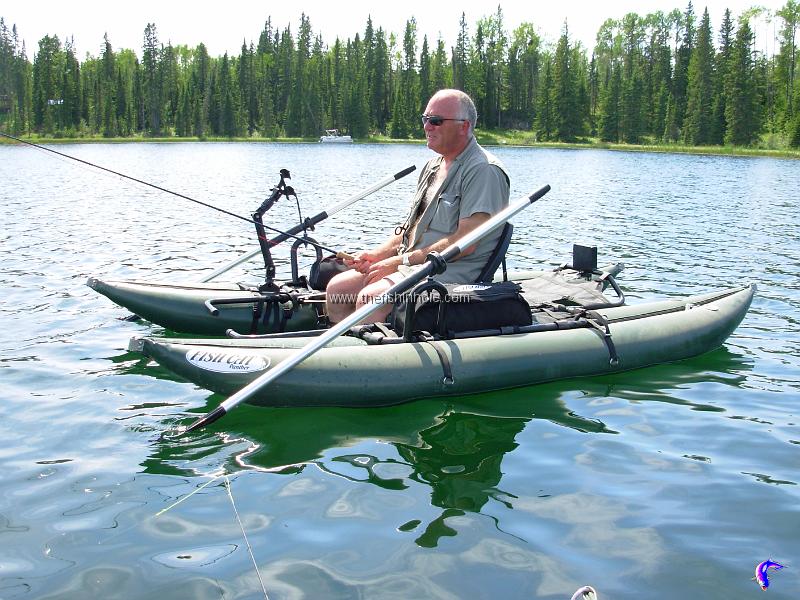

River fishing from a pontoon boat is a little more complex, though no less effective. Start on mild rivers without significant current or white-water to gain the comfort you'll need to effectively navigate faster currents. Drifting downstream allows anglers to cast out their line and drift a bait at the same speed as the boat moves, making for long, extended drifts. Cast slightly forward of the boat as this makes watching and controlling your line easier. Fly anglers love this technique for drifting a dry fly along a riverbank for extended distances without drag. Casting and retrieving is also an effective tactic, whether with fly or spin gear; again you'll want to cast ahead and quartering away for maximum line control.
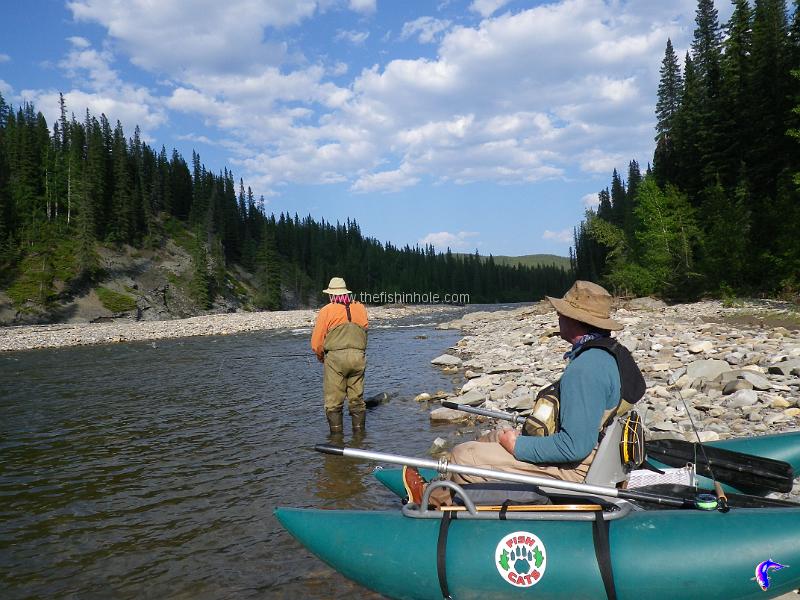

The best holding waters on rivers are often found in eddies, the heads or tails of pools, behind obstructions or along current seams. You'll often find that the most effective way to cover these waters is to beach your boat on shore, get out to walk and wade the area. For this reason, waders are often worn when pontoon boat fishing on rivers.
